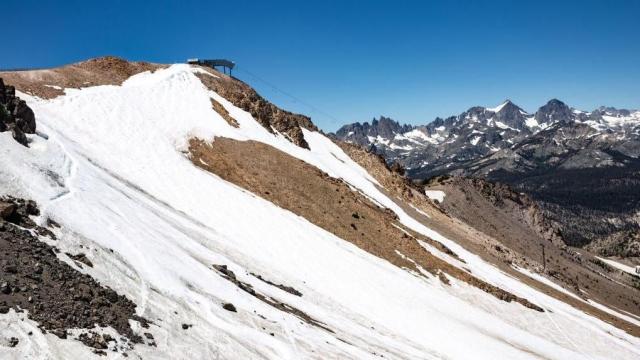Our quickly warming world is losing many signs of winter—once snowy mountain tops aren’t as frosty tipped, glaciers are disappearing, and sea ice at the poles is melting at alarming rates. But new research outlines a small reason for optimism. Scientists project that even though climate change will make the world hotter, snow may actually become brighter and whiter. This more-reflective snow could help offset some of the ill effects of the climate crisis and slow down the rate of melting for snowpack.
A study published this month in the journal Nature Communications found that snow will likely become cleaner and brighter by the end of this century due to falling rates of black carbon pollution. Warmer temperatures will contribute to higher rates of snowmelt, but cleaner snow, brighter snow should reflect sunlight away from an area—sending heat back into space instead of absorbing it.
For the study, scientists with the U.S. Department of Energy’s Pacific Northwest National Laboratory looked at multiple factors that affect snowpack, including increasing global temperatures, pollution, and the shape of the snow grains. They studied snowpack trends in high mountain ranges in the Northern Hemisphere from 1995 to 2014.
Using that data, researchers then modelled snowpack trends for two different emissions scenarios on mountains in the Western U.S. and the Tibetan Plateau from 2015 to 2100. In the scenario where we don’t cut our fossil fuel consumption, the world will get hotter and snowpack loss will increase up to 58% compared to today. However, cleaner snow would reduce the rate of snow loss by about 8%, researchers wrote. In an optimistic scenario, where we get our emissions under control, there’s less global warming and more snowpack. In that scenario, researchers estimated a snowpack loss of roughly 15% compared to current levels.
In both scenarios, particle pollution known as black carbon is expected to decrease. This form of pollution often comes from fossil fuel energy sources, including gas-powered engines and coal-fired power plants, according to the U.S. Environmental Protection Agency. With fewer sooty dark particles falling to the ground, the snow will be cleaner and brighter than it is today by the end of this century.
“Snow is not just snow,” Dalei Hao, a study author, said in a statement. “There’s clean snow and there’s dirty snow, and how they respond to sunlight is very different.”
Pollution particles settle on top of the snowpack, making it darker. Darker snow absorbs sunlight, which makes snow melt faster. Cleaner snow is whiter and reflects sunlight back into space, helping regulate temperatures and maintain the snowpack for longer during the winter. Clean snowmelt is also important for the many people who rely on snowmelt to replenish waterways that supply drinking water. Communities out West, including in California, rely on an abundance of snowpack to ensure that reservoirs hold enough water to meet the needs of homes, industries, and wildlife.
The study authors point out that, though air is cleaner overall, pollution from wildfire smoke is on the rise. The climate crisis has created conditions that worsen naturally occurring wildfires, which means more particles in the air from fires in our atmosphere. Canadian wildfires this summer created record-breaking air pollution that spread far across the continent. Thankfully, large wildfires are not as common during the winter in the Northern Hemisphere. “The uncertainties of wildfire simulations are expected to have only minor impacts on our results, as we focus on the snow season from December to May when wildfire activities are less frequent,” the team wrote.
Modelling snowmelt is a highly complex effort, though. The shape of the individual snowflakes in the snowpack must also be considered, because the shape of the snow grains affects the overall rate of melting. The presence of algae on snow can also affect melting, but the study notes that more modelling and observation is needed to better understand how this could change snowmelt.
“Most models have not looked at these two effects, warming and dirty snow, together when projecting future changes,” Ruby Leung, a scientist and study author, said in a press release. “It’s important to do so, because they can have opposite effects. Determining which one is the more dominant influence is a key to determining the fate of the snowpack in the future.”
